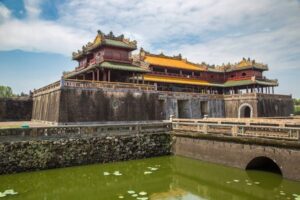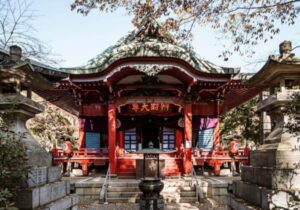The Travel Blog
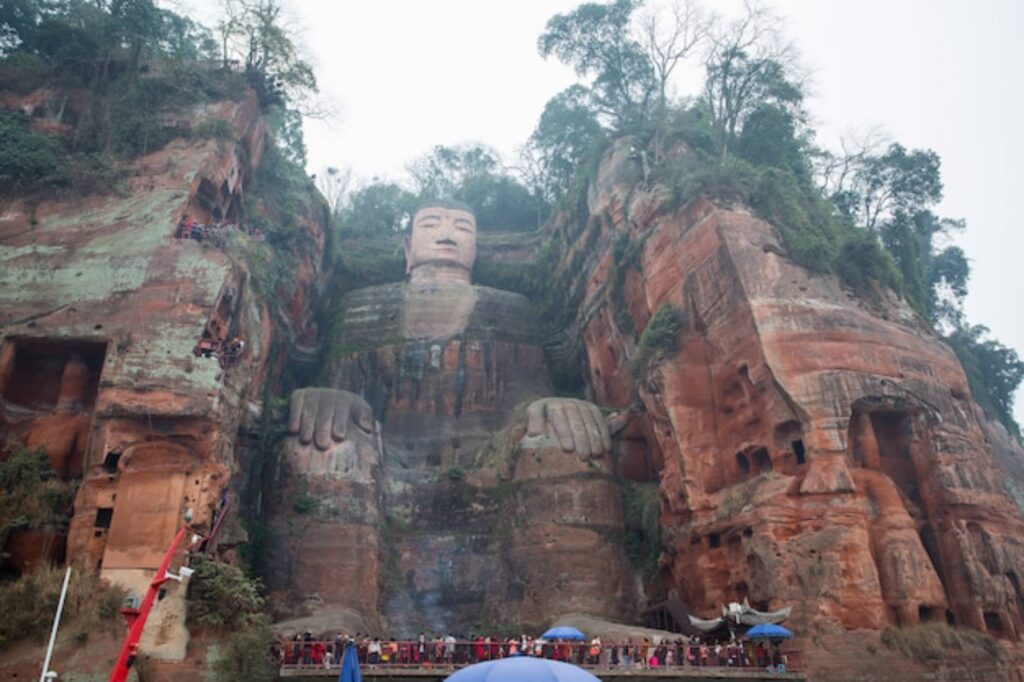
Leshan, China: Beyond the Giant Buddha
Most travellers know Leshan for its colossal Buddha carved into a cliff, gazing over the confluence of three rivers. But what if we told you that this Sichuan city offers much more than a single monumental attraction? Leshan, China, offers a rich mix of experiences. You can explore ancient tea culture, hidden temples, and riverside charm. Don’t forget to try the spicy cuisine. This destination is truly worth a deep dive.
This guide highlights more than just the famous statue. It uncovers hidden gems and cultural heritage sites in China. Leshan offers a great escape for curious explorers. If you’re the type who looks past postcards to seek out soul, welcome to Leshan.
The Icon: Leshan Giant Buddha
A Colossal Masterpiece
Of course, no trip to Leshan would be complete without witnessing the Leshan Giant Buddha. Carved during the Tang Dynasty, it stands 71 metres tall and was designed to calm turbulent waters threatening passing boats.
Highlights of your visit include:
- Descending the steep stairway along the cliff for a close-up view
- Viewing the Buddha’s serene face from the river on a boat cruise
- Exploring the Lingyun Temple complex at the top
“Standing by its enormous toes makes you feel both humbled and protected. It’s not just a statue — it’s a story carved in stone.” – Lily, solo traveller
Tips for Visiting
- Best time: Early morning or late afternoon to avoid crowds and harsh light
- Entry fee: ~90 RMB for the Buddha and Lingyun Temple
- Getting there: Easily reachable by bus or taxi from Leshan city centre
Wuyou Temple: The Overlooked Treasure
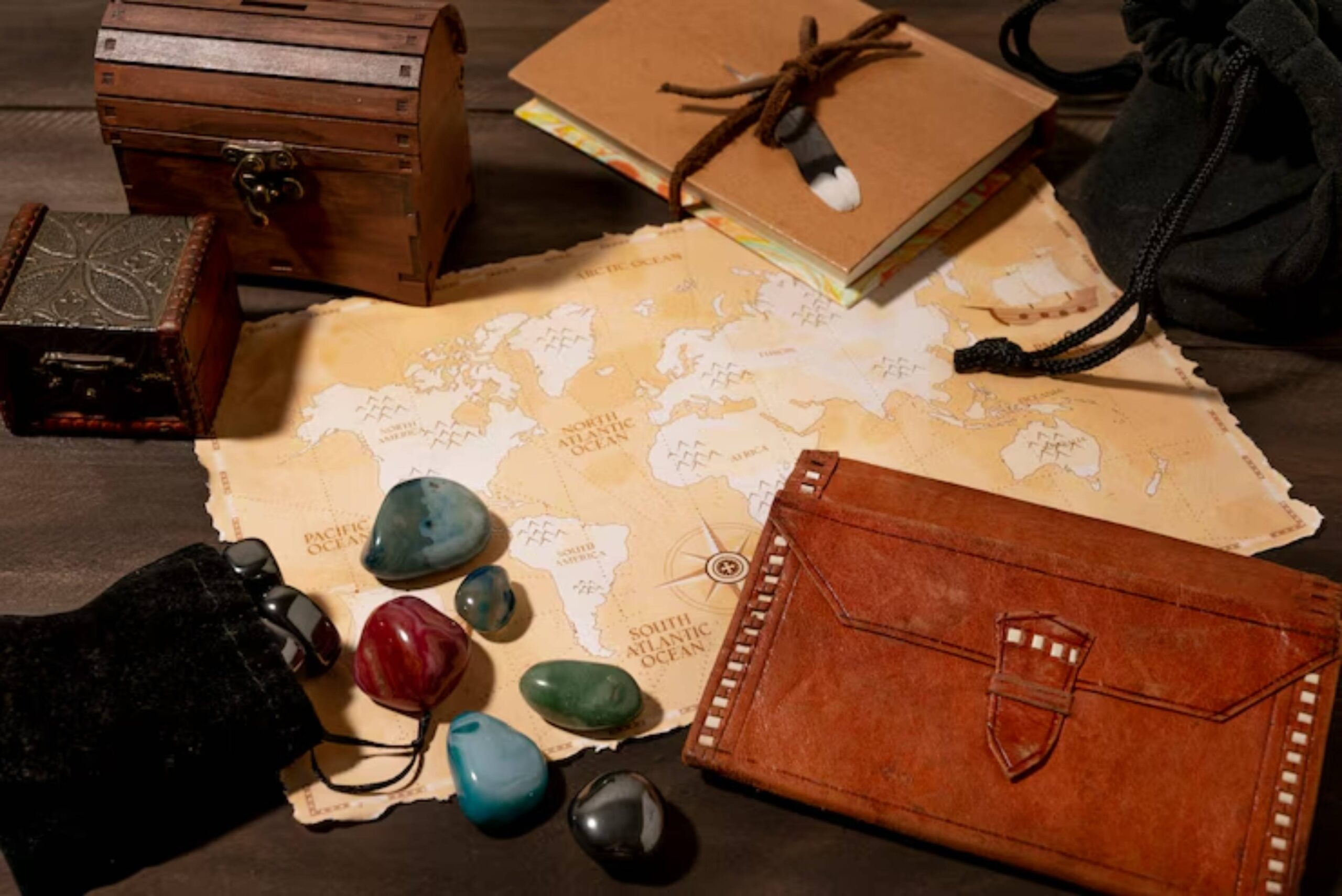
Tourists often rush to the Buddha, missing Wuyou Temple. This hidden gem offers a calm and serene escape.
Nestled atop Wuyou Hill, the temple features:
- A beautiful red-walled complex surrounded by forest
- Philosophical stone carvings and calligraphy
- Panoramic views of the river and the Giant Buddha from a unique angle
The climb to the top is a mild workout, but it’s well worth it. You’ll likely share the space with a few monks and local devotees rather than crowds.
Ancient Towns and Tea Culture
Luocheng Ancient Town
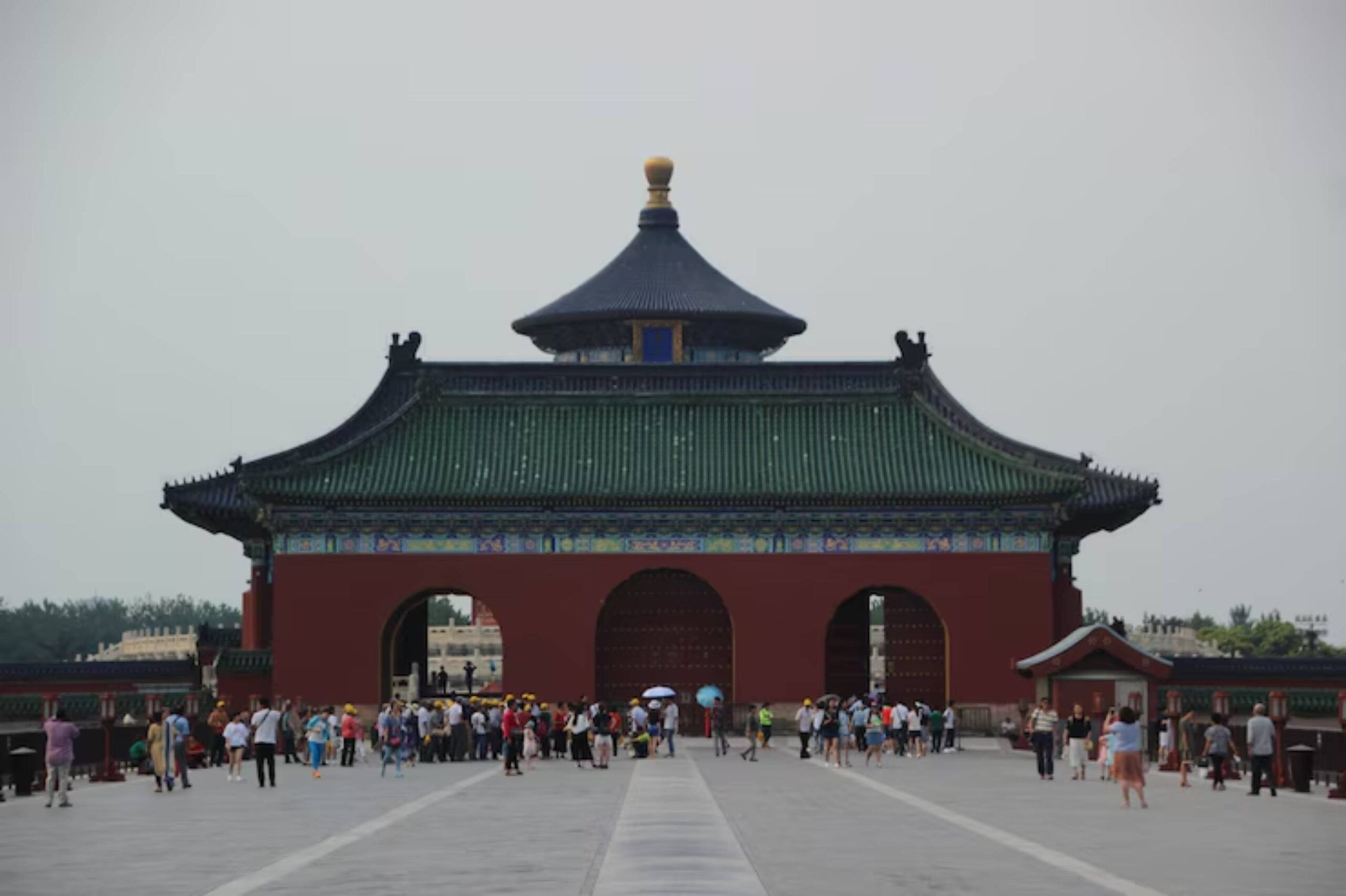
Luocheng is about 40 minutes from Leshan. This ancient town is famous for its boat-shaped layout and vibrant teahouse culture.
Walk its stone-paved lanes to find:
- Wooden architecture dating back to the Ming and Qing dynasties
- Local teahouses where the old art of ear-cleaning is still practised
- A bridge that has stood since imperial times
Luocheng is a photographer’s paradise. It’s also a cultural heritage site that shows the Sichuanese way of life.
Emei Snow Bud Tea
The misty mountains around Leshan are prime tea-growing territory. Visit a local plantation to sample Emei Snow Bud, a delicate green tea with sweet undertones.
What to expect during a tea tour:
- Tea leaf picking and hand-rolling demonstrations
- Tastings guided by tea masters
- Stories of monks, emperors, and tea rituals passed down through generations
Nature Walks and River Trails
Riverside Promenades
Leshan’s riverside paths are a great way to soak in local life. You’ll see:
- Locals practising tai chi in the morning mist
- Elderly couples sipping tea on benches
- Kids flying kites against a backdrop of pagodas and boats
These quiet moments are where Leshan truly reveals itself.
Mount Emei National Park
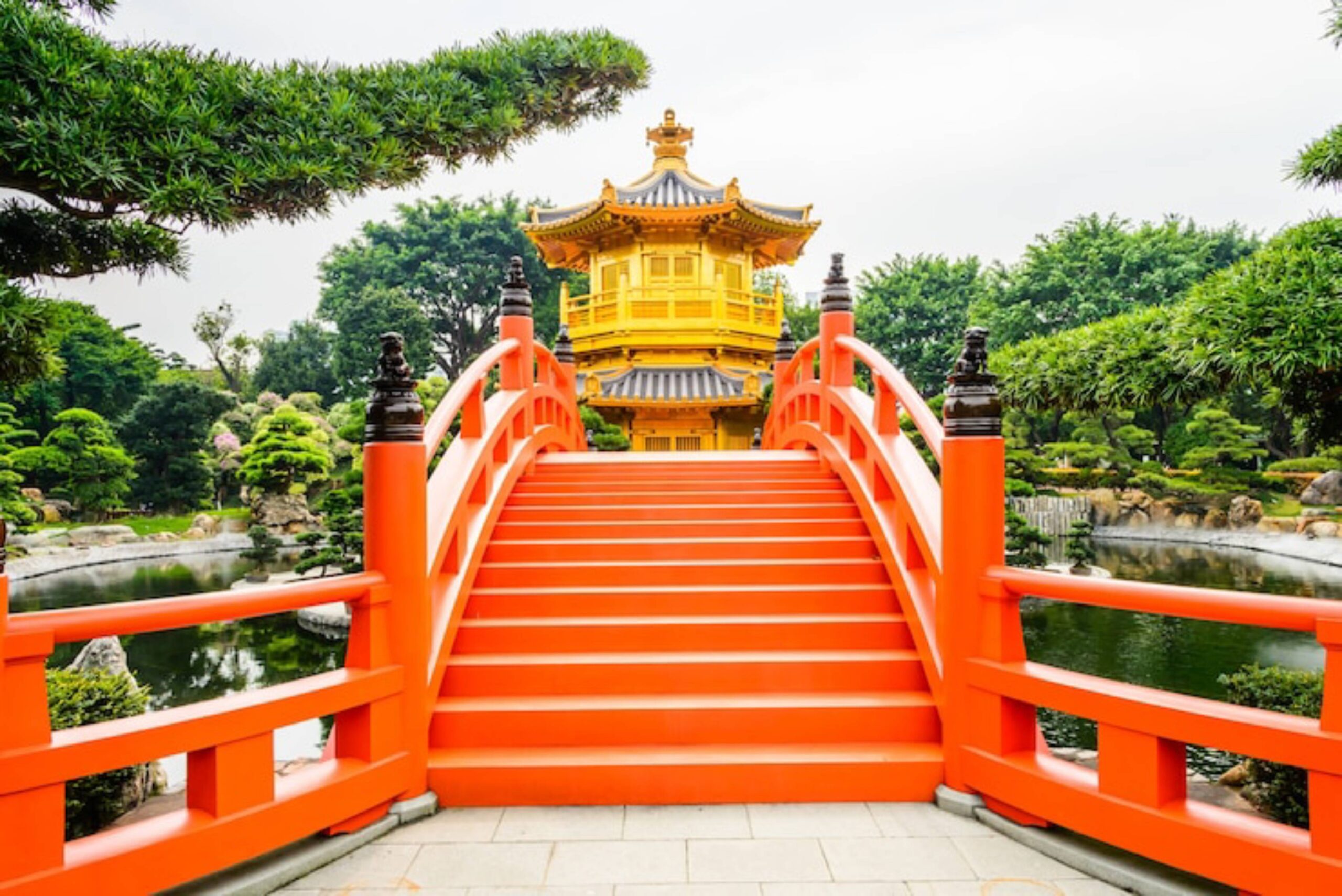
Though often seen as a separate destination, Mount Emei is closely linked to Leshan. A UNESCO World Heritage Site, it’s one of China’s four sacred Buddhist mountains.
Things to do on Mount Emei:
- Visit the Golden Summit for sunrise views
- Spot monkeys on the trail (they can be cheeky!)
- Explore ancient temples like Baoguo and Wannian
Stay overnight at a temple guesthouse for a truly spiritual experience.
If you love nature tips, check out Skardu, Pakistan: Gateway to the Karakoram Range.
Leshan’s Flavours: Spicy, Bold, and Addictive
Must-Try Dishes
Sichuan cuisine needs no introduction, but Leshan has its own local stars:
- Bobo Chicken: Skewered meats and vegetables dipped in spicy sesame broth
- Douhua (Tofu Pudding): Served savoury here with soy, chilli, and herbs
- Sweet Skin Duck: Roasted duck with crispy, caramelised skin
- Cold Noodles with Sichuan Pepper: A fiery favourite in summer
“It’s a culinary rollercoaster — sweet, salty, spicy, and numbing all at once. My tastebuds were dancing!” – Karim, food blogger
Where to Eat
Head to Zhanggongqiao Food Street or Jiazhou Yiyuan Night Market for authentic local fare. Don’t worry if you don’t speak Mandarin — the universal language of delicious food bridges all gaps.
Practical Travel Tips
- Getting There: Leshan is about 1.5 hours from Chengdu by high-speed train.
- Local Transport: Use taxis or rent a bike for exploring
- Accommodation: Boutique hotels and homestays are abundant and affordable
- Best Time to Visit: Spring (March–May) and Autumn (September–November)
- Language: Mandarin is the main language; translation apps are helpful
Hidden Highlights: Local Life in Leshan’s Backstreets
While Leshan’s major landmarks impress, some of its most meaningful moments come from quiet interactions and slow explorations off the main tourist trail.
Old Leshan Neighbourhoods
Step away from the crowds and you’ll find winding alleys where daily life hums gently.
These traditional neighbourhoods are full of:
- Stone houses with curved tiled roofs
- Elderly residents playing mahjong on portable tables
- Tiny noodle shops that have served locals for generations
Stop by a corner stall for a bowl of hot wonton soup, or simply sit and watch life unfold at a slow, deliberate pace.
Calligraphy and Folk Art Workshops
Leshan has a quiet but thriving artistic community.
Small studios scattered across the city offer:
- Brush painting and calligraphy sessions
- Woodblock printing rooted in Buddhist iconography
- Clay figurine and paper-cutting demonstrations
Many of these workshops are run by local artists who are passionate about preserving traditional crafts. Joining one offers an unforgettable, hands-on glimpse into Sichuan’s cultural heart.
Evening River Lanterns
In the evenings, head to the riverbanks near the Giant Buddha. Local vendors often sell floating lanterns that visitors can release into the water. It’s both a visual spectacle and a quiet, reflective ritual — often accompanied by soft music or whispered wishes.
Whether you’re there to celebrate, to honour, or just to take in the beauty, it’s a simple tradition that captures the gentle soul of Leshan after dark.
Conclusion: Leshan, Layer by Layer
Leshan is known for its Giant Buddha, but there’s more to discover. The city is rich in history, culture, and charm. From quiet temples to spicy street food, this place delights curious travellers. Poetic river walks add to the charm.
Skip the whistle-stop tour. Stay a while. Sip the tea. Chat with the locals. Watch the sun dip behind the red cliffs.
Because in Leshan, the real magic lies beyond the obvious.
Have you uncovered a hidden gem in Leshan? Share your story below — we’d love to hear it!
If Leshan sparked your curiosity, don’t miss Jeju Island, South Korea: Volcanic Landscapes and Waterfalls.



